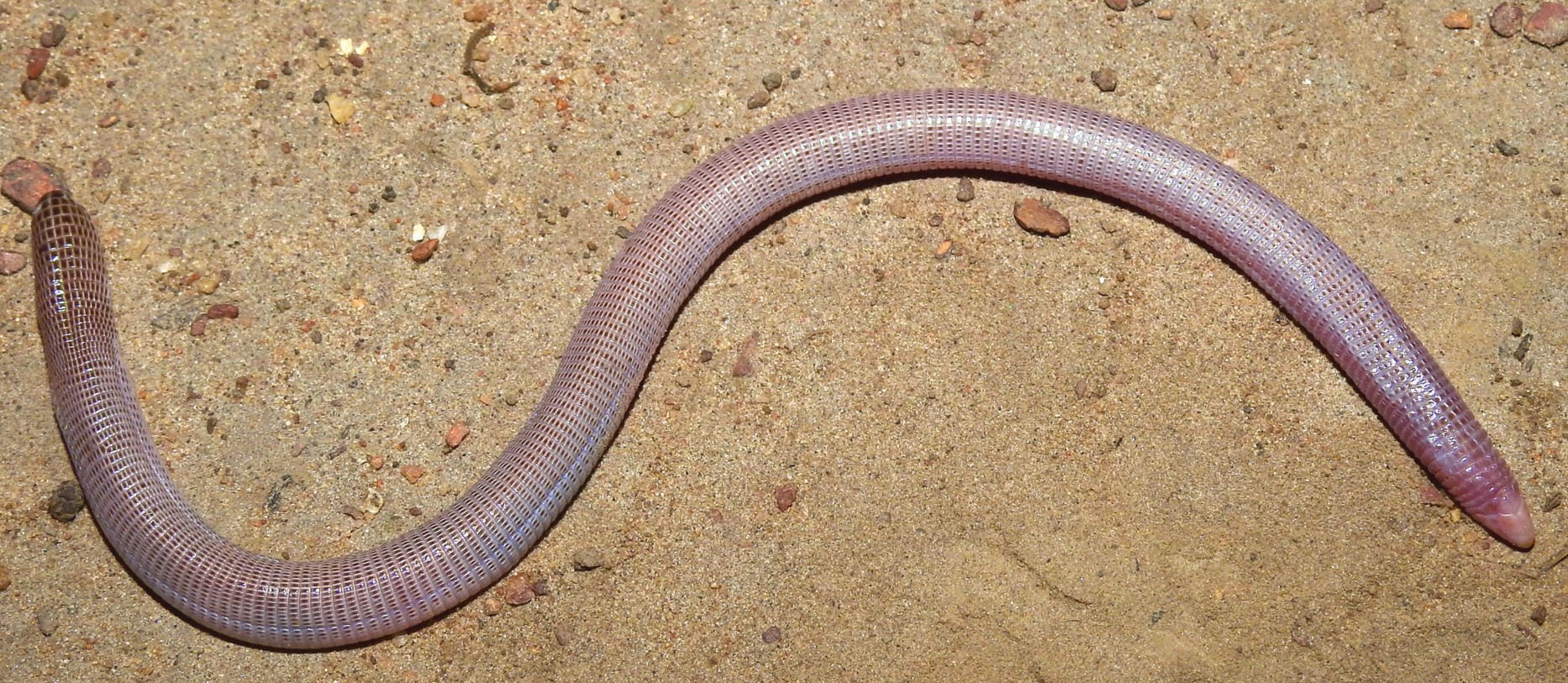Sometimes, nature just doesn’t know what it wants to be. There’s no greater example of that than the worm lizards, and a brand-new species of these has just been identified in a mountainous region of Brazil.
The new species was identified during environmental work being carried out on behalf of the mining company Bahia Mineração (BAMIN) and took place in the northern region of the Espinhaço Mountains. There, a team found multiple specimens of a worm lizard (more formally known as amphisbaenians, a group of legless lizards) that didn’t appear to belong to any known species.
To confirm that these specimens were indeed examples of a new species, they had to look at things a little closer, measuring and comparing not just their features – like the shape of the snout, their scales, and the number of rings on their bodies – but also how their DNA differed to existing known species of worm lizard.
Those investigations confirmed suspicions, and the new species was dubbed Amphisbaena amethysta, after the ties its native region has to amethyst mining. Unlike the gem, A. amethysta probably isn’t going to be sought out for its beauty – not to body shame, but it is pretty unusual-looking.
Ok, maybe we take that back just a little bit, it looks kinda cool and shiny here.
Like other worm lizards, it looks like… well, an oversized worm. Or if someone asked it if it wanted to be a worm or a snake and it simply answered “yes”. It’s just under 26 centimeters (10 inches) long and though it looks quite pink on initial glance, its scales become browner at the tail.
As with its slimy earthworm doppelgangers, A. amethysta is also fossorial, meaning that it’s well-adapted to living underground – hence it has small eyes that are hard to spot unless you’re looking for them.
Despite being a fan burying itself out of sight, the researchers were able to determine that A. amethysta doesn’t stray far from the area in which it was found, with a known range of 38 kilometers (23.6 miles) at an altitude averaging 1,000 meters (3,281 feet).
While a few species have been found in the same region at similar altitudes before, the authors of the study describing the new species are hopeful that this is a sign there are more to be discovered, both reptile and otherwise.
“The identification of a new species indicates that the fossorial fauna, as well as that of other groups, in the Espinhaço Mountain Range region is far from being completely known and that it may harbour a much greater diversity of endemic taxa than has been realised so far,” they conclude.
The study is published in the journal ZooKeys.
Source Link: New Worm Lizard Species Just Dropped – And It Looks Thoroughly Bizarre
